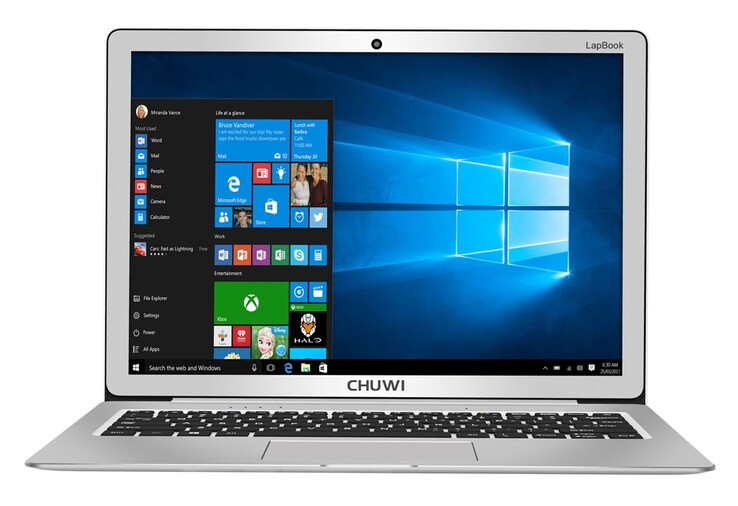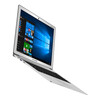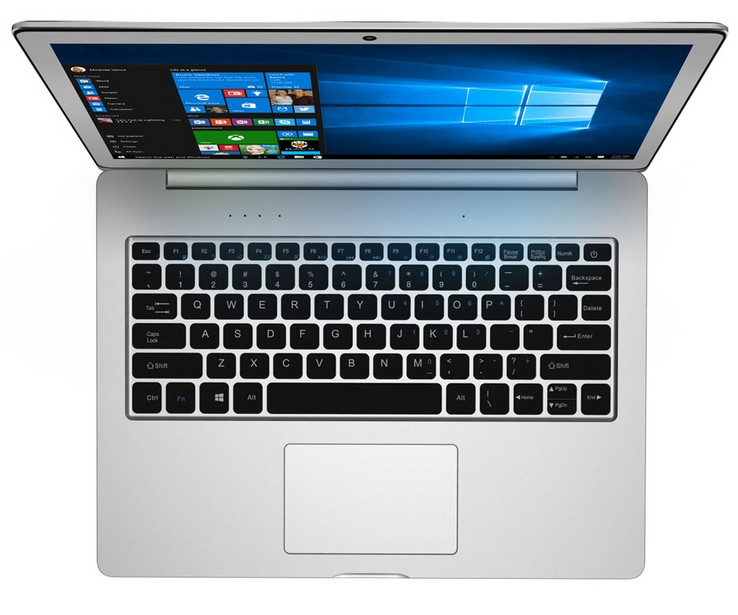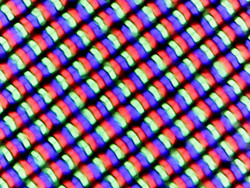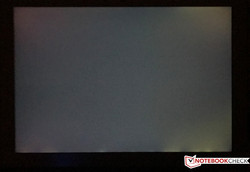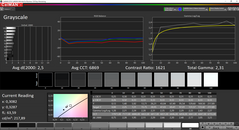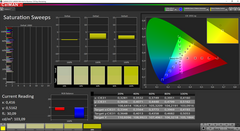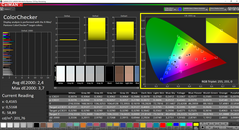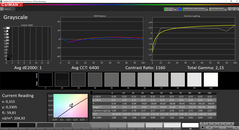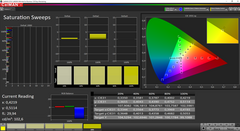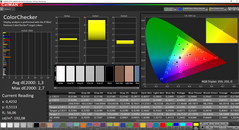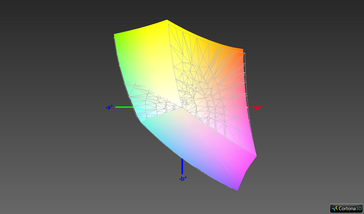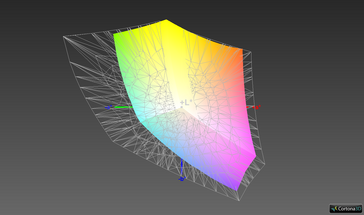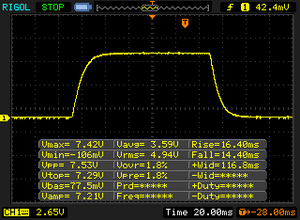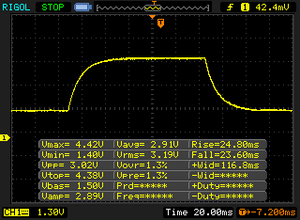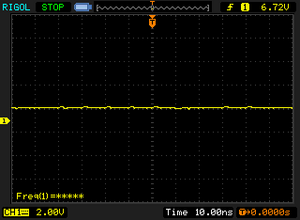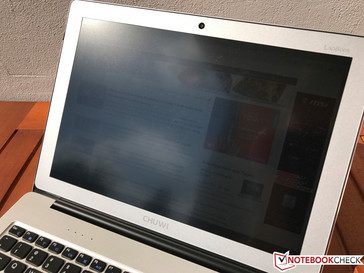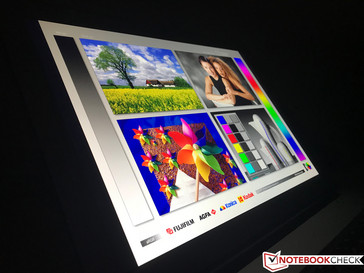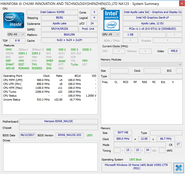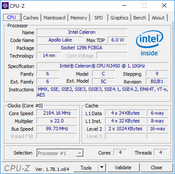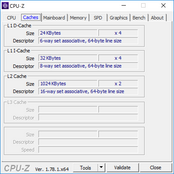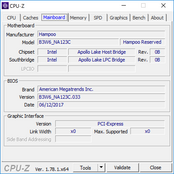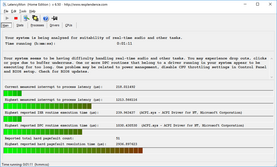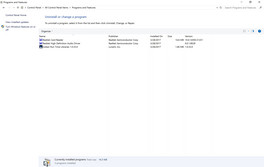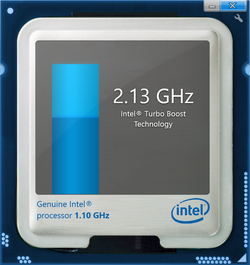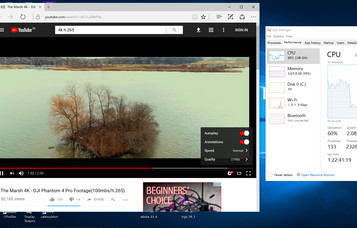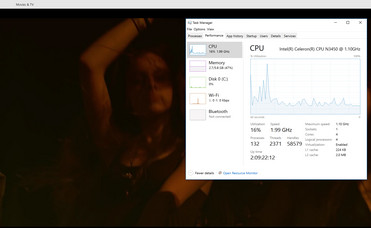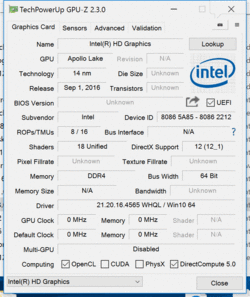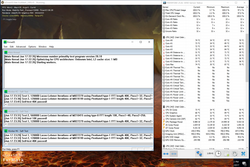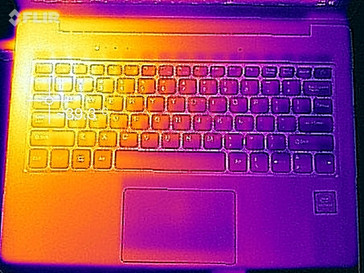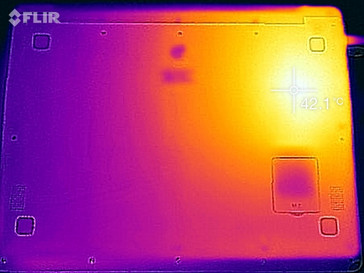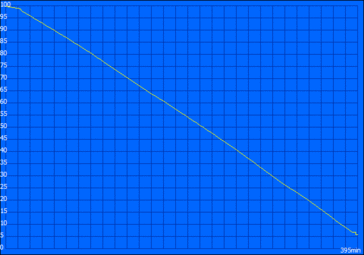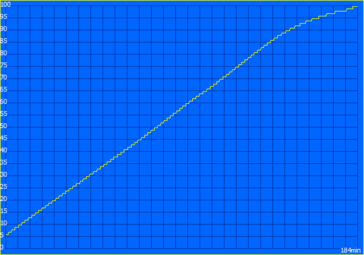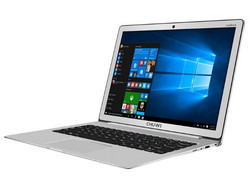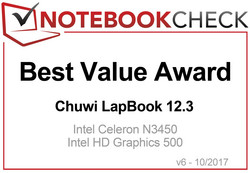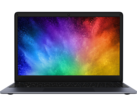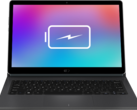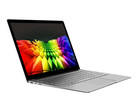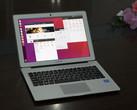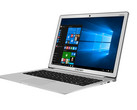Chuwi LapBook 12.3 (Celeron, 2K IPS) Laptop Review

For the original German review, see here.
Year after year, laptops are getting faster and high-end Ultrabooks impress us with slim cases, high-resolution displays, and powerful components. If you are only looking for a laptop for everyday tasks like web-browsing, mails, or video-streaming, however, you do not have to pay that much. There are plenty of devices for up to 500 Euros (~$589), but you will soon notice that there are always drawbacks, like a boring plastic case or a bad TN display.
This is where the Chinese manufacturer Chuwi wants to score with its LapBook 12.3. The specs look promising, because for about 350 Euros (~$412; current street price ~300 Euros, ~$353) you get a high-quality metal case, an entry-level quad-core processor from Intel, 6 GB RAM, and 64 GB eMMC storage. The highlight is certainly the high-resolution and matte 12.3-inch panel (3:2), which is already familiar from the Microsoft Surface Pro 4.
The list of rivals include the Acer Aspire 1, Acer Switch 3, Jumper EZBook 3, Acer Swift 1, as well as the Lenovo E31-80.
Case & Connectivity
The first contact with the metal chassis of the LapBook 12.3 is already very positive. The front of the base unit is slightly rounded, so the device appears slimmer than it actually is. The whole base unit is very sturdy and you can only dent the central area a bit with a lot of pressure, but this is not important in practice. This applies for the lid as well, and we were not able to provoke picture distortions. The LapBook 12.3 can easily keep up with much more expensive devices in this respect.
The weakness of the case is definitely the black central hinge, which appears to be made out of plastic. An opening angle of ~135 degrees is sufficient, but there is some creaking when you adjust the angle, and the hinge could also be a bit firmer since there is some bouncing.
The maintenance hatch at the bottom is another advantage. It covers the M.2-2242 slot, which can be used to expand the integrated eMMC storage of the LapBook 12.3 with a corresponding SSD. All in all, the case is almost a small sensation in this price range.
Ports
The port selection covers the basics. Besides two USB ports (1x 3.0 & 1x 2.0) you also get a microSD-reader, a 3.5 mm stereo jack, and finally a mini-HDMI output. We should mention that the USB ports are implemented the wrong way (upside-down), but this should not be an issue for regular USB thumb drives or cables.
The microSD-card reader is located at the right side. As expected, it is only attached via USB 2.0 and does not manage high transfer rates. We determined up to ~37 MB/s in combination with our reference card from Toshiba (Exceria Pro M501), but the rivals are not much better, either.
| SD Card Reader | |
| average JPG Copy Test (av. of 3 runs) | |
| Lenovo E31-80 80MX0107GE (Toshiba Exceria Pro SDXC 64 GB UHS-II) | |
| Acer Swift 1 SF113-31-P2CP (Toshiba Exceria Pro SDXC 64 GB UHS-II) | |
| Chuwi Lapbook 12.3 (Toshiba Exceria Pro M501) | |
| Jumper EZbook 3 | |
| maximum AS SSD Seq Read Test (1GB) | |
| Chuwi Lapbook 12.3 (Toshiba Exceria Pro M501) | |
| Acer Swift 1 SF113-31-P2CP (Toshiba Exceria Pro SDXC 64 GB UHS-II) | |
| Jumper EZbook 3 (Toshiba Exceria Pro M401 64 GB) | |
| Lenovo E31-80 80MX0107GE (Toshiba Exceria Pro SDXC 64 GB UHS-II) | |
Internet connections are handled by the Wireless-AC 3165 dual-band module from Intel. It supports all important standards, including Bluetooth 4.2, and it also works with 5 GHz networks. However, it is only a 1x1 adapter with a theoretical transfer rate of up to 433 Mbps, so the results in the WLAN test fall behind the rivals, but the results are still okay. We did not experience any connectivity issues, either.
| Networking | |
| iperf3 transmit AX12 | |
| Acer Switch 3 SW312-31-P5VG | |
| Chuwi Lapbook 12.3 | |
| Acer Swift 1 SF113-31-P2CP | |
| Acer Aspire 1 A114-31-C472 | |
| Jumper EZbook 3 | |
| iperf3 receive AX12 | |
| Acer Switch 3 SW312-31-P5VG | |
| Acer Swift 1 SF113-31-P2CP | |
| Acer Aspire 1 A114-31-C472 | |
| Chuwi Lapbook 12.3 | |
| Jumper EZbook 3 | |
Input Devices
Chuwi uses a black chiclet keyboard, which creates a nice contrast to the silver chassis. Thanks to the white lettering, you can see the smallish keys (16 x 14 mm) very well. Unfortunately, there is no background illumination. The typing experience is very convenient. You get comparatively long key travel for a modern device and also rich feedback. Only the space bar clatters quite a bit. You can definitely use this input for longer texts.
The touchpad sits a bit lower in the palm rest and has a slightly roughened surface, so you can easily find it with the fingers. Chuwi implemented a ClickPad and you can press the lower half down. It is well implemented and there is no clatter, but the mechanical clicking sound is extremely loud and sounds cheap. You should stick to tap-for-click. The handling was inconspicuous during our review period and gestures (up to four fingers) are well executed.
Display
Potential buyers of the Chuwi LapBook 12.3 do not have to worry about the display options, because there is just one: a 12.3-inch matte IPS display with a resolution of 2736x1824 pixels. The resolution is unusual and is otherwise only used by Microsoft for the Surface Pro. The Chuwi LapBook 12.3 is a special device thanks to the 3:2 aspect ratio since there are not many conventional notebooks with this aspect ratio (yet). By the way, the screen is provided by Samsung and has the ID SDC8353, which is the exact same model we know from the Surface Pro 4, while the 2017 models of the Surface Pro are equipped with LG panels. It is quite interesting that we could not determine any PWM-flickering on the Chuwi – contrary to Microsoft's Surface Pro 4.
Unlike the panel of the Surface Pro, however, the display of the test model cannot meet the highest quality standards. Both the contrast and the color gamut are very good, but the average luminance of 219 nits is significantly lower compared to the Surface Pro 4, which is close to 400 nits. The latter is obviously much more expensive, but many other rivals are better in this respect as well. The low black value is a big advantage though and results in an extremely high contrast of more than 1700:1. Subjectively, the picture is very crisp and there is only a slightly grainy impression on bright content. Dark content also reveals some backlight-bleeding at the lower edge as well as the upper corners.
| |||||||||||||||||||||||||
Brightness Distribution: 81 %
Center on Battery: 222 cd/m²
Contrast: 1723:1 (Black: 0.13 cd/m²)
ΔE ColorChecker Calman: 2.4 | ∀{0.5-29.43 Ø4.77}
ΔE Greyscale Calman: 2.5 | ∀{0.09-98 Ø5}
98.3% sRGB (Argyll 1.6.3 3D)
63.4% AdobeRGB 1998 (Argyll 1.6.3 3D)
69.5% AdobeRGB 1998 (Argyll 3D)
98.4% sRGB (Argyll 3D)
68% Display P3 (Argyll 3D)
Gamma: 2.31
CCT: 6869 K
| Chuwi Lapbook 12.3 SDC8353, , 2736x1824, 12.3" | Microsoft Surface Pro 4, Core m3 Samsung SDC3853, , 2736x1824, 12.3" | Acer Swift 1 SF113-31-P2CP AU Optronics AUO442D, , 1920x1080, 13.3" | Acer Switch 3 SW312-31-P5VG XR122EA2T, , 1920x1200, 12.2" | Jumper EZbook 3 MS_9003, , 1920x1080, 14.1" | Lenovo E31-80 80MX0107GE AU Optronics B133XTN01.6, , 1366x768, 13.3" | |
|---|---|---|---|---|---|---|
| Display | -1% | -41% | -8% | -23% | -44% | |
| Display P3 Coverage (%) | 68 | 67.5 -1% | 39.24 -42% | 68 0% 58.8 -14% | 51.6 -24% | 37.35 -45% |
| sRGB Coverage (%) | 98.4 | 96.6 -2% | 59 -40% | 91.2 -7% 87.5 -11% | 77.3 -21% | 56.2 -43% |
| AdobeRGB 1998 Coverage (%) | 69.5 | 69 -1% | 40.55 -42% | 66.9 -4% 60.6 -13% | 53 -24% | 38.58 -44% |
| Response Times | 2% | 15% | 22% | 34% | 13% | |
| Response Time Grey 50% / Grey 80% * (ms) | 48.4 ? | 46 ? 5% | 37 ? 24% | 37 ? 24% | 46 ? 5% | 44 ? 9% |
| Response Time Black / White * (ms) | 30.8 ? | 31 ? -1% | 29 ? 6% | 25 ? 19% | 11.6 ? 62% | 26 ? 16% |
| PWM Frequency (Hz) | 50 ? | 20000 ? | 200 ? | |||
| Screen | -7% | -52% | -32% | -226% | -174% | |
| Brightness middle (cd/m²) | 224 | 389.2 74% | 273 22% | 364 63% | 384 71% | 234 4% |
| Brightness (cd/m²) | 219 | 392 79% | 258 18% | 341 56% | 341 56% | 222 1% |
| Brightness Distribution (%) | 81 | 92 14% | 81 0% | 85 5% | 76 -6% | 87 7% |
| Black Level * (cd/m²) | 0.13 | 0.27 -108% | 0.24 -85% | 0.47 -262% | 1.28 -885% | 0.54 -315% |
| Contrast (:1) | 1723 | 1441 -16% | 1138 -34% | 774 -55% | 300 -83% | 433 -75% |
| Colorchecker dE 2000 * | 2.4 | 3.61 -50% | 4.84 -102% | 3.4 -42% | 8.7 -263% | 12.09 -404% |
| Colorchecker dE 2000 max. * | 3.7 | 9.11 -146% | 7.61 -106% | 16.7 -351% | 20.25 -447% | |
| Greyscale dE 2000 * | 2.5 | 3.8 -52% | 5.23 -109% | 1.7 32% | 11.1 -344% | 13 -420% |
| Gamma | 2.31 95% | 2.16 102% | 2.38 92% | 2.36 93% | 2.2 100% | 2.78 79% |
| CCT | 6869 95% | 5969 109% | 7180 91% | 6750 96% | 12445 52% | 15562 42% |
| Color Space (Percent of AdobeRGB 1998) (%) | 63.4 | 63 -1% | 37 -42% | 59 -7% | 36 -43% | |
| Color Space (Percent of sRGB) (%) | 98.3 | 97 -1% | 59 -40% | 91 -7% | 56 -43% | |
| Total Average (Program / Settings) | -2% /
-4% | -26% /
-41% | -6% /
-18% | -72% /
-139% | -68% /
-123% |
* ... smaller is better
You can see the potential of the display in our measurements with the X-Rite i1Pro2 spectrophotometer. The average DeltaE-2000 deviations for the grayscale as well as the colors are already in the target range <3 ex-works. The color temperature is slightly too cool and you can see a minor blue cast in the grayscale, but it is not visible in practice. There are still some smaller outliers for the colors, but the performance is already excellent, especially for the price, and calibration is not really necessary.
We still tried it and were able to improve the results even further. All values are now where they should be and there are no more outliers. Such a result is usually reserved for expensive laptops or high-end tablets like the Microsoft Surface Pro. Our calibrated profile is linked in the display box further at the top and can be downloaded for free.
The CalMAN screenshots already showed that the color accuracy does not decrease at higher saturation levels, which indicates high sRGB gamut. We can confirm this, and the sRGB reference is almost covered completely; the more challenging AdobeRGB gamut is still covered by 63.4%. This qualifies the LapBook 12.3 for some picture-editing, but complex operations will be too challenging for the otherwise pretty slow hardware.
Display Response Times
| ↔ Response Time Black to White | ||
|---|---|---|
| 30.8 ms ... rise ↗ and fall ↘ combined | ↗ 16.4 ms rise | |
| ↘ 14.4 ms fall | ||
| The screen shows slow response rates in our tests and will be unsatisfactory for gamers. In comparison, all tested devices range from 0.1 (minimum) to 240 (maximum) ms. » 83 % of all devices are better. This means that the measured response time is worse than the average of all tested devices (20.2 ms). | ||
| ↔ Response Time 50% Grey to 80% Grey | ||
| 48.4 ms ... rise ↗ and fall ↘ combined | ↗ 24.8 ms rise | |
| ↘ 23.6 ms fall | ||
| The screen shows slow response rates in our tests and will be unsatisfactory for gamers. In comparison, all tested devices range from 0.165 (minimum) to 636 (maximum) ms. » 84 % of all devices are better. This means that the measured response time is worse than the average of all tested devices (31.6 ms). | ||
Screen Flickering / PWM (Pulse-Width Modulation)
| Screen flickering / PWM not detected | |||
In comparison: 53 % of all tested devices do not use PWM to dim the display. If PWM was detected, an average of 8081 (minimum: 5 - maximum: 343500) Hz was measured. | |||
The matte screen surface helps outdoors, but a comfortable experience is prevented by the low luminance. Even working on a cloudy day is not very enjoyable. However, this is not a result of the viewing-angle stability. Chuwi uses a high-quality IPS panel, and there are no picture distortions even from extreme angles.
Performance
After the good results for the case and the display in particular, we now have to lower our expectations or adjust them to the low price, respectively. However, everyday tasks are still no problem for the Intel Celeron CPU, 6 GB RAM, and 64 GB eMMC storage. This includes things like web-browsing, mails, YouTube (also 4K), video-streaming and light picture or video-editing. The performance should be sufficient for many home users.
Processor
Intel's Celeron N3450 inside the Chuwi LapBook 12.3 is a quad-core processor with a low base clock of 1.1 GHz. It does not consume much power and is a good choice for passively cooled devices. The Celeron belongs to the Apollo Lake series and is less powerful than its popular Core-i siblings. Features like Hyper-Threading or Turbo Boost are missing as well, but the processor cores can still reach up to 2.2 GHz via Burst. Our LapBook 12.3 can reach up to 2.13 GHz.
This value can be maintained in single-core and multi-core tests, so the Cinebench R15 Multi score is comparatively good. You will notice the slightly lower clock (2.13 vs. 2.2 GHz) in the Single test though.
| Cinebench R15 | |
| CPU Single 64Bit | |
| Microsoft Surface Pro 4, Core i5, 128GB | |
| Lenovo E31-80 80MX0107GE | |
| Cube Thinker m3 | |
| Microsoft Surface Pro 4, Core m3 | |
| Acer Swift 1 SF113-31-P2CP | |
| Acer Switch 3 SW312-31-P5VG | |
| Acer Aspire 1 A114-31-C472 | |
| Jumper EZbook 3 | |
| Chuwi Lapbook 12.3 | |
| CPU Multi 64Bit | |
| Microsoft Surface Pro 4, Core i5, 128GB | |
| Lenovo E31-80 80MX0107GE | |
| Cube Thinker m3 | |
| Microsoft Surface Pro 4, Core m3 | |
| Chuwi Lapbook 12.3 | |
| Acer Switch 3 SW312-31-P5VG | |
| Acer Swift 1 SF113-31-P2CP | |
| Acer Aspire 1 A114-31-C472 | |
| Jumper EZbook 3 | |
Our Cinebench R15 Multi loop checks how the laptop can handle sustained workloads. Passively cooled laptops often struggle in this test, and this seems to be the case here as well. However, the score stabilizes after a couple of runs and the high level can be maintained. This illustrates the limited performance potential of the CPU pretty well, because even small background tasks can affect the performance noticeably.
The processor performance is not limited on battery. More information and benchmarks for the Intel Celeron N3450 are available here.
System Performance
It is no surprise that our test model does not perform very well in the PCMarks considering the slow components in combination with the high display resolution. But is that actually noticeable in practice? The limitations are actually very small, which is also a result of the storage solution (more on that in the next section). The system is still quite responsive in general.
It is no problem to watch high-resolution videos, which look great on this screen. A 4K YouTube video (H.265, 60 FPS) with the default Edge browser results in a CPU load between 40-60%, but the playback is still completely smooth. The situation is even better when you watch a 4K video (H.264) from the hard drive at 15-25% CPU load.
| PCMark 8 - Home Score Accelerated v2 | |
| Lenovo E31-80 80MX0107GE | |
| Cube Thinker m3 | |
| Acer Switch 3 SW312-31-P5VG | |
| Acer Swift 1 SF113-31-P2CP | |
| Jumper EZbook 3 | |
| Chuwi Lapbook 12.3 | |
| PCMark 8 Home Score Accelerated v2 | 1461 points | |
| PCMark 8 Creative Score Accelerated v2 | 1861 points | |
| PCMark 8 Work Score Accelerated v2 | 2152 points | |
| PCMark 10 Score | 1269 points | |
Help | ||
Storage Devices
Chuwi uses flash storage for the LapBook 12.3, but it is only a slow eMMC module (Toshiba) with a capacity of 64 GB. The benchmark results are clearly beaten by other eMMC modules. Subjectively, however, the handling is still sufficiently quick and responsive. You will still notice some occasional delays if you are used to an SSD-based system.
We already mentioned the maintenance hatch at the bottom, where you can implement an M.2-SSD (2242, SATA) to expand the storage capacity. We cannot say whether you can use this SSD as the primary drive due to the lack of a corresponding module.
| Chuwi Lapbook 12.3 64 GB eMMC Flash | Microsoft Surface Pro 4, Core i5, 128GB Samsung MZFLV128 NVMe | Acer Switch 3 SW312-31-P5VG Hynix HCG4a2 64 GB | Acer Aspire 1 A114-31-C472 Hynix HBG4a2 32 GB eMMC | Acer Swift 1 SF113-31-P2CP 256 GB NVMe | Lenovo E31-80 80MX0107GE Samsung MZYTY256HDHP | |
|---|---|---|---|---|---|---|
| CrystalDiskMark 3.0 | 1721% | 387% | 435% | 1141% | 2114% | |
| Read Seq (MB/s) | 150.8 | 666 342% | 272.2 81% | 275.7 83% | 450.3 199% | 522 246% |
| Write Seq (MB/s) | 51.5 | 154.2 199% | 149.3 190% | 147.9 187% | 440.1 755% | 457.4 788% |
| Read 512 (MB/s) | 132 | 266.3 102% | 231.6 75% | 233.9 77% | 318.9 142% | 398.1 202% |
| Write 512 (MB/s) | 32.94 | 154.2 368% | 140 325% | 132.1 301% | 387.1 1075% | 303.6 822% |
| Read 4k (MB/s) | 4.93 | 28.51 478% | 11.43 132% | 24.06 388% | 10.78 119% | 35.05 611% |
| Write 4k (MB/s) | 2.42 | 101.5 4094% | 26.31 987% | 28.62 1083% | 57 2255% | 88 3536% |
| Read 4k QD32 (MB/s) | 15.28 | 368.3 2310% | 30.39 99% | 29.93 96% | 130.3 753% | 299.7 1861% |
| Write 4k QD32 (MB/s) | 2.57 | 153.6 5877% | 33.54 1205% | 35.02 1263% | 101 3830% | 229.8 8842% |
GPU Performance
The Intel HD Graphics 500 is an iGPU for Apollo Lake CPUs. It is equipped with just 12 EUs (Executive Units) and is based on the older Skylake GPU architecture.
The GPU is very slow and not designed for challenging applications. Intel's HD Graphics 620, also not a performance miracle, is almost three times faster. Still, the LapBook 12.3 performs well against its direct rivals and is on par with the Acer Swift 1 in 3DMark 11. Both the Acer Switch 3 (HD 505) and the Surface Pro 4 (HD 515), however, are noticeably faster.
The graphics performance is not reduced on battery power. More technical information and benchmarks for the HD Graphics 500 are available in our Tech section.
| 3DMark 11 - 1280x720 Performance GPU | |
| Lenovo ThinkPad X270 20HN0012PB | |
| Lenovo E31-80 80MX0107GE | |
| Microsoft Surface Pro 4, Core m3 | |
| Acer Switch 3 SW312-31-P5VG | |
| Chuwi Lapbook 12.3 | |
| Acer Swift 1 SF113-31-P2CP | |
| Jumper EZbook 3 | |
| 3DMark 11 Performance | 655 points | |
| 3DMark Cloud Gate Standard Score | 2262 points | |
| 3DMark Fire Strike Score | 286 points | |
| 3DMark Fire Strike Extreme Score | 129 points | |
Help | ||
Gaming Performance
The integrated Intel HD Graphics is definitely designed for multimedia applications but not for gaming. Even BioShock Infinite from 2013 is not playable at the lowest settings. You should either focus on even older games or simple titles from the Windows Store.
| low | med. | high | ultra | |
|---|---|---|---|---|
| BioShock Infinite (2013) | 21.2 | 13 |
Emissions & Energy
System Noise
The CPU of the LapBook 12.3 is cooled passively. There is no mechanical hard drive, either, so the laptop is silent in every situation. We did not hear any electronic noises from our test model.
Temperature
The components are not particularly powerful, so the moderate temperature development is no surprise. The surface temperatures also stay below 40 °C in the stress test, while the CPU warms up to 73 °C, which is not critical by any means though. The CPU starts at 1.9 GHz for all four cores in the stress test, and the GPU runs at 700 MHz – but only for two seconds. The TDP then drops from 15 to 6 W (CPU: 1.2 GHz; GPU: 200 MHz), which does not change over the course of the test.
(+) The maximum temperature on the upper side is 39.2 °C / 103 F, compared to the average of 35.9 °C / 97 F, ranging from 21.4 to 59 °C for the class Subnotebook.
(+) The bottom heats up to a maximum of 39.4 °C / 103 F, compared to the average of 39.3 °C / 103 F
(+) In idle usage, the average temperature for the upper side is 26.5 °C / 80 F, compared to the device average of 30.8 °C / 87 F.
(+) The palmrests and touchpad are reaching skin temperature as a maximum (34.1 °C / 93.4 F) and are therefore not hot.
(-) The average temperature of the palmrest area of similar devices was 28.2 °C / 82.8 F (-5.9 °C / -10.6 F).
Speakers
The two speaker grilles are located at the outer edges of the bottom panel behind the front support feet. Our measurements show a decent maximum volume and the speakers leave a good impression for movies or TV shows in particular. The lack of bass and problems with the differentiation are mainly noticeable when you listen to music. You should use a pair of headphones or external speakers if you like to listen to more than a bit of web radio in the background. The stereo jack was inconspicuous during our review.
Chuwi Lapbook 12.3 audio analysis
(±) | speaker loudness is average but good (76.4 dB)
Bass 100 - 315 Hz
(-) | nearly no bass - on average 23.2% lower than median
(+) | bass is linear (6.5% delta to prev. frequency)
Mids 400 - 2000 Hz
(±) | higher mids - on average 7.5% higher than median
(±) | linearity of mids is average (11.7% delta to prev. frequency)
Highs 2 - 16 kHz
(±) | higher highs - on average 6.7% higher than median
(±) | linearity of highs is average (7.5% delta to prev. frequency)
Overall 100 - 16.000 Hz
(-) | overall sound is not linear (31.2% difference to median)
Compared to same class
» 93% of all tested devices in this class were better, 2% similar, 6% worse
» The best had a delta of 5%, average was 18%, worst was 53%
Compared to all devices tested
» 90% of all tested devices were better, 2% similar, 8% worse
» The best had a delta of 4%, average was 24%, worst was 134%
Acer Switch 3 SW312-31-P5VG audio analysis
(-) | not very loud speakers (63 dB)
Bass 100 - 315 Hz
(-) | nearly no bass - on average 28.4% lower than median
(+) | bass is linear (5.1% delta to prev. frequency)
Mids 400 - 2000 Hz
(±) | reduced mids - on average 6.7% lower than median
(±) | linearity of mids is average (14.4% delta to prev. frequency)
Highs 2 - 16 kHz
(+) | balanced highs - only 2.4% away from median
(+) | highs are linear (5.6% delta to prev. frequency)
Overall 100 - 16.000 Hz
(-) | overall sound is not linear (33.2% difference to median)
Compared to same class
» 93% of all tested devices in this class were better, 1% similar, 6% worse
» The best had a delta of 6%, average was 20%, worst was 57%
Compared to all devices tested
» 92% of all tested devices were better, 1% similar, 7% worse
» The best had a delta of 4%, average was 24%, worst was 134%
Frequency comparison (checkboxes select/deselectable!)
Power Consumption
Our consumption measurements reveal high idle consumption results. The two comparison devices with similar processors (Swift 1 and Jumper EZBook 3) are much more efficient; only the Cube Thinker consumes more power while idling. However, you have to consider the much higher display resolution of the LapBook; but more optimizations would have been nice.
The 24-W power adapter is sufficient but does not have any headroom to charge the device under load.
| Chuwi Lapbook 12.3 Celeron N3450, 12.3", 2736x1824 | Acer Swift 1 SF113-31-P2CP Pentium N4200, 13.3", 1920x1080 | Jumper EZbook 3 Celeron N3350, 14.1", 1920x1080 | Cube Thinker m3 m3-7Y30, 13.5", 3000x2000 | Lenovo E31-80 80MX0107GE 6200U, 13.3", 1366x768 | Microsoft Surface Pro 4, Core i5, 128GB 6300U, 12.3", 2736x1824 | |
|---|---|---|---|---|---|---|
| Power Consumption | 20% | 32% | -12% | -6% | -2% | |
| Idle Minimum * (Watt) | 5.9 | 3.4 42% | 3.18 46% | 4.5 24% | 5.6 5% | 4.4 25% |
| Idle Average * (Watt) | 7.7 | 7 9% | 6.14 20% | 10.3 -34% | 6.8 12% | 9 -17% |
| Idle Maximum * (Watt) | 8.6 | 9.1 -6% | 6.4 26% | 11.5 -34% | 7.5 13% | 10.7 -24% |
| Load Average * (Watt) | 18.2 | 15.2 16% | 13.3 27% | 23.3 -28% | 26.9 -48% | 19.6 -8% |
| Load Maximum * (Watt) | 23.6 | 14.7 38% | 13.6 42% | 21.1 11% | 26.4 -12% | 19.9 16% |
* ... smaller is better
| Off / Standby | |
| Idle | |
| Load |
|
Key:
min: | |
Battery Runtime
The battery capacity is just 36.5 Wh, which is not much. Chuwi is quite conservative with its runtime prediction at 5 hours; our WLAN test runs for more than 6.5 hours – a decent result for this capacity. The Acer Swift 1, for example, has a bigger battery, but it does not last as long. The Lenovo E31-80 on the other hand manages longer runtimes with a smaller battery but is only equipped with a lower display resolution.
A full charge takes three hours and four minutes with the provided 24-W power adapter (182 grams, 9.5 x 4.2 x 3 cm). The charging progress is very linear and quick-charge is not supported.
Pros
Cons
Verdict
We are positively surprised by the Chuwi LapBook 12.3. Test models in this price range are usually equipped with plastic cases and mediocre screens. The aluminum chassis of the LapBook 12.3 on the other hand feels premium, and you might suspect a four-digit price when you watch a video on the high-res screen.
The other sections, especially the performance, are much more in line with the price. Still, everyday tasks are no problem for the small quad-core processor, and the same applies for playback of high-res movies as well. The LapBook 12.3 does not have any serious issues in general. We think two areas could be improved: The very good panel could be brighter, and the Surface Pro 4 shows there is still a lot of headroom. However, the power consumption would probably be much higher in return. An illuminated keyboard would have been nice as well.
Great aluminum chassis, excellent display, silent operation, and sufficient performance for common tasks: The Chuwi LapBook 12.3 offers an impressive price-performance ratio and deserves our recommendation.
If you consider the current price at around 300 Euros (~$353), however, there are not really any drawbacks. The LapBook 12.3 is almost a sensation in this price range and even noticeably more expensive systems like the Acer Switch 3 or Swift 1 do not offer much more, so the Chuwi LapBook 12.3 deserves our Best Value Award.
Chuwi Lapbook 12.3
- 10/16/2017 v6 (old)
Andreas Osthoff, Benjamin Herzig


